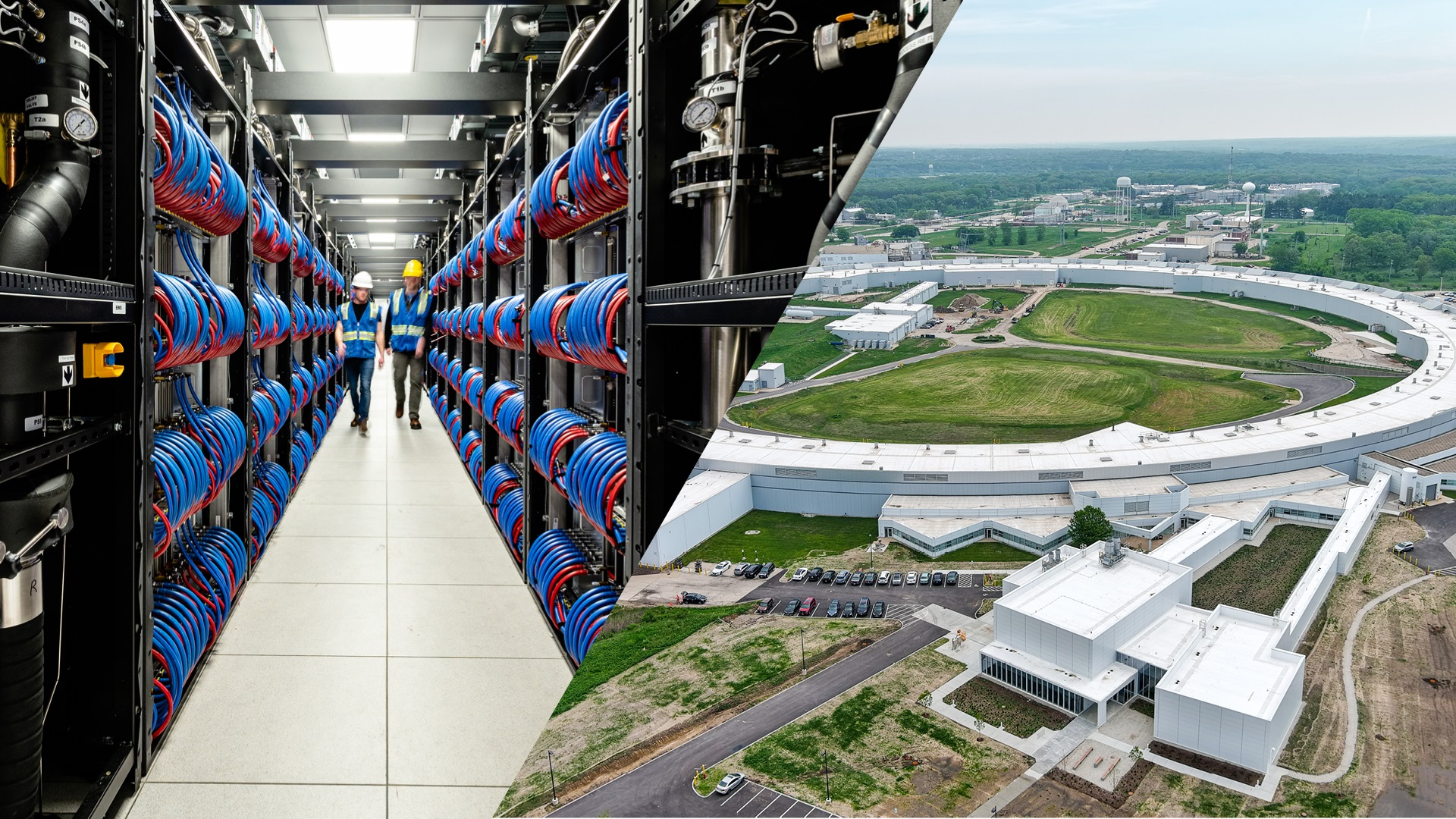Imagine finding the right materials to significantly extend the range of battery-powered cars, or pinpointing the defect in the human brain that causes Parkinson’s — all in a matter of weeks or months instead of years or decades. This is the future of science. And it’s coming to Argonne National Laboratory.
Argonne is building two new powerhouse research tools that will be transformational for research. One is the ALCF’s next-generation supercomputer, Aurora. The other is an upgrade of the Advanced Photon Source (APS), a world-leading light source.
The two user facility upgrades will transform how science is carried out, empowering scientists to make discoveries at unprecedented speeds. No other research laboratory hosts a comparable dynamic duo of technology, each boosting the power of the other.
Aurora will be one of the nation’s first exascale computers, capable of delivering more than 2 exaflops of computing power, or more than 2 billion billion calculations per second.
The APS is essentially a powerful microscope, using X-rays — a billion times brighter than those in your dentist’s office — to peer deep inside materials. Once upgraded, the APS will generate X-ray beams that are up to 500 times brighter than what it can produce currently.
Dynamic Duo
Individually, the two machines represent a massive leap forward in technology. Together, they will spur revolutionary science by enhancing capabilities in real-time imaging and enabling rapid interpretation of results and trends. Their co-location on the Argonne site means that they can exchange data practically instantaneously, working as an integrated tool for science.
The upgraded APS will generate enormous quantities of diverse data that will be fed to Aurora for data-driven discovery and to train its artificial intelligence models. These will accelerate the computations of complex systems, sometimes by 1,000 times or more. They will also expedite some of the most intensive computational tasks, boosting scientists’ ability to unravel complex phenomena.
With its advanced capabilities in AI, modeling and simulation, image processing, and statistical analysis, Aurora will quickly sift through large volumes from the APS, identify data features that merit closer inspection, and enable APS researchers to better focus their experiments. Aurora’s near real-time analysis will be able to make on-the-fly decisions that guide scientists as they search for key features in APS’s mountain of data.
This marriage of experimental science and data analysis leads to faster breakthroughs in many scientific areas, from drug discovery to materials science.
Successful Test Runs with Polaris
The ALCF’s new Polaris system has allowed the ALCF and APS team to carry out test runs aimed at enabling near-real-time data analysis on Aurora. Using data from four different X-ray techniques – all of which will be greatly enhanced by the upgraded APS – the team has been working on training Polaris to recognize urgent scientific data requests and turn them around without delay.
Among the biggest issues the team is working out with Polaris is pre-emption – teaching the computer to recognize which projects are more urgent than others. In late 2022, the team has completed their first fully automated end-to-end test of the pre-emptible queues on Polaris using data collected during an APS experiment. The process relies on Globus, a research automation platform created by researchers at Argonne and the University of Chicago, to run the computational flows that link the two facilities. Globus manages the numerous high-speed data transfers, ALCF computations, and data cataloging and distribution steps involved in an experiment. The team is now working to enable this capability on as many APS beamlines as possible ahead of the upgrade.
In addition to accelerating science at Argonne, this approach can be emulated for other user facilities, and can serve as a model for how experimental and observational facilities integrate with computing centers.
